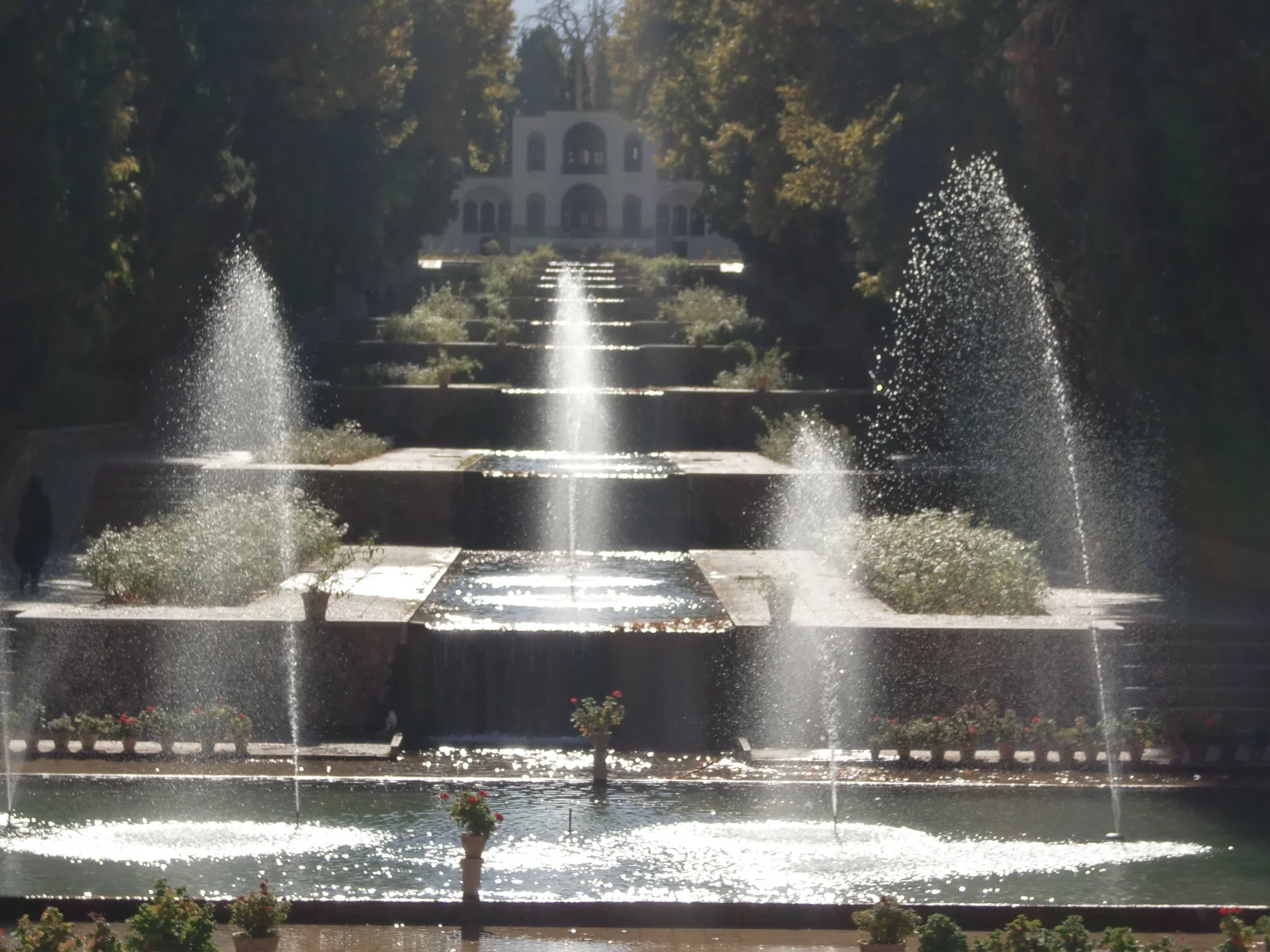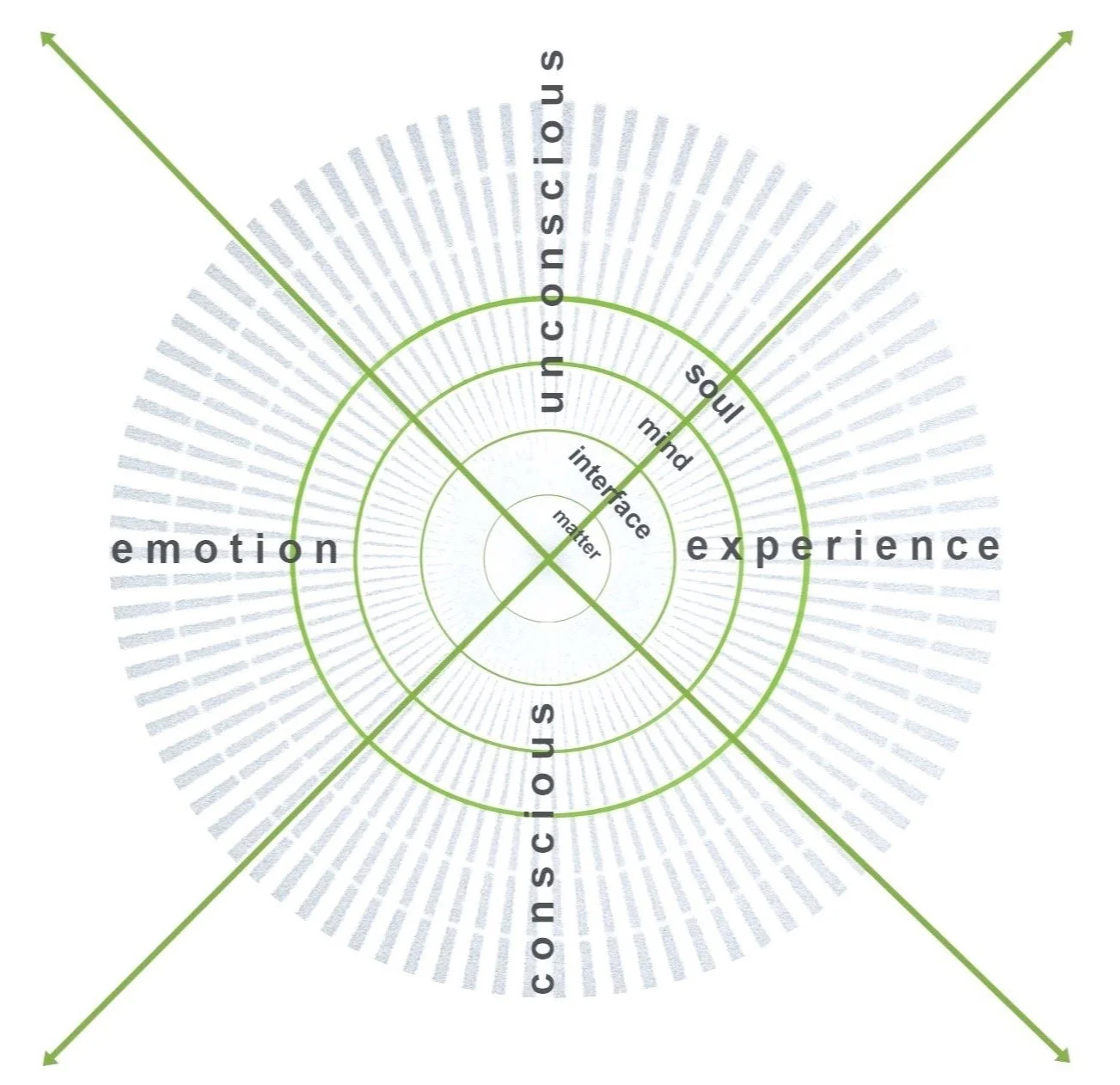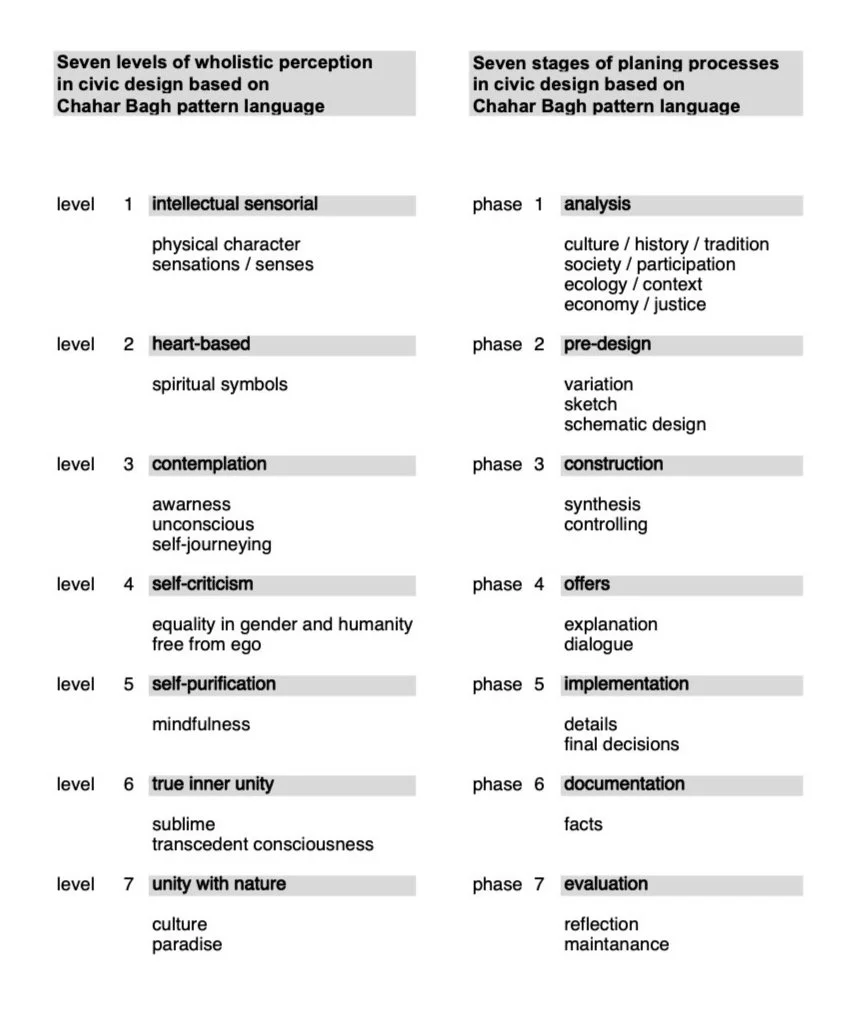Charbagh-Design-Language
“Chahar-Bagh” means “four-part garden”
In ancient Persian (Sanskrit), “Chahar” symbolizes plurality a “Bagh” stands for God, referring to multiple gods. “Chahar-Bagh” is a historical symbol rooted in ancient Persian culture, dating back thousands of years. It represents the ideal world, embodying the duality of heaven and earth. As a reflection of the cosmos, it symbolizes eternal life. This worldview has been passed down through generations in stories, gardens, and images. In its classical representation, it is characterized by a mirror-symmetrical layout and the arrangement of four sections.
The Persian garden
is an enchanting place, a reflection of the paradisiacal garden, and is deeply rooted in symbolism. The Chahar-Bagh pattern language incorporates four central elements: water, earth, fire, and wind. Water, for instance, symbolizes life, as it is believed to be the source of existence and that God created every living creature from water.
Quaternary Model
Based on analyzing Kevin Lynch’s seminal work, The Image of the City (1960), I developed the “Quaternary Model,” which expands on his concepts of “imageability” and “legibility.” Lynch shows how people create cognitive maps of their surroundings, blending rational structures with symbolic meanings. This led me to ask:
How can these principles be enriched by cultural and spiritual dimensions to deepen our understanding of space?
Inspired by the Sufi philosophy of my cultural heritage, which emphasizes the unity of all existence and the immediacy of the divine, I incorporated these ideas into the model. This approach promotes a holistic perception of urban and landscape spaces. When we feel a profound connection to cities or landscapes, we are often responding to unconscious archetypal images—what C.G. Jung refers to as “paradise images.” In this extended framework, I call this deeper dimension spiritual legibility, highlighting the symbolic and emotional resonance that shapes how we experience the world.
Designing Through the Quaternary Model
The Quaternary Model is based on the pattern language of Chahar-Bagh. It integrates the four fundamental spheres of our lives: the physical, intellectual, spiritual, and emotional dimensions. These dimensions promote the unity of humanity and nature.
For me, designing is an inner journey, a process of self-reflection in seven stages, similar to the seven stages of self-development in the Sufi tradition. The Quaternary Model helps me put these principles into practice by enabling a holistic perspective.
Dieter Kienast says: “… anyone who designs a garden, whether in the physical world or in the realm of imagination, plays a role in a microscopic part of creation.”
A Model for Holistic Design
The seven-stage planning process is a procedural model that can be carried out step by step and cyclically with all participants involved.
For me, it begins with a careful analysis that encompasses both intellectual and sensory dimensions. I then allow all the insights gathered about the site to resonate within me through heart-based contemplation, fostering a deeper emotional connection to the project.
In the next stage, I work to integrate symbols, images, and cultural references to uncover the deeper meaning and identity of the place. This is followed by self-criticism and purification, during which I question and simplify my ideas in alignment with the project’s objectives. Finally, I strive to channel the internal processes I have experienced into the project, embedding them into the final design.




